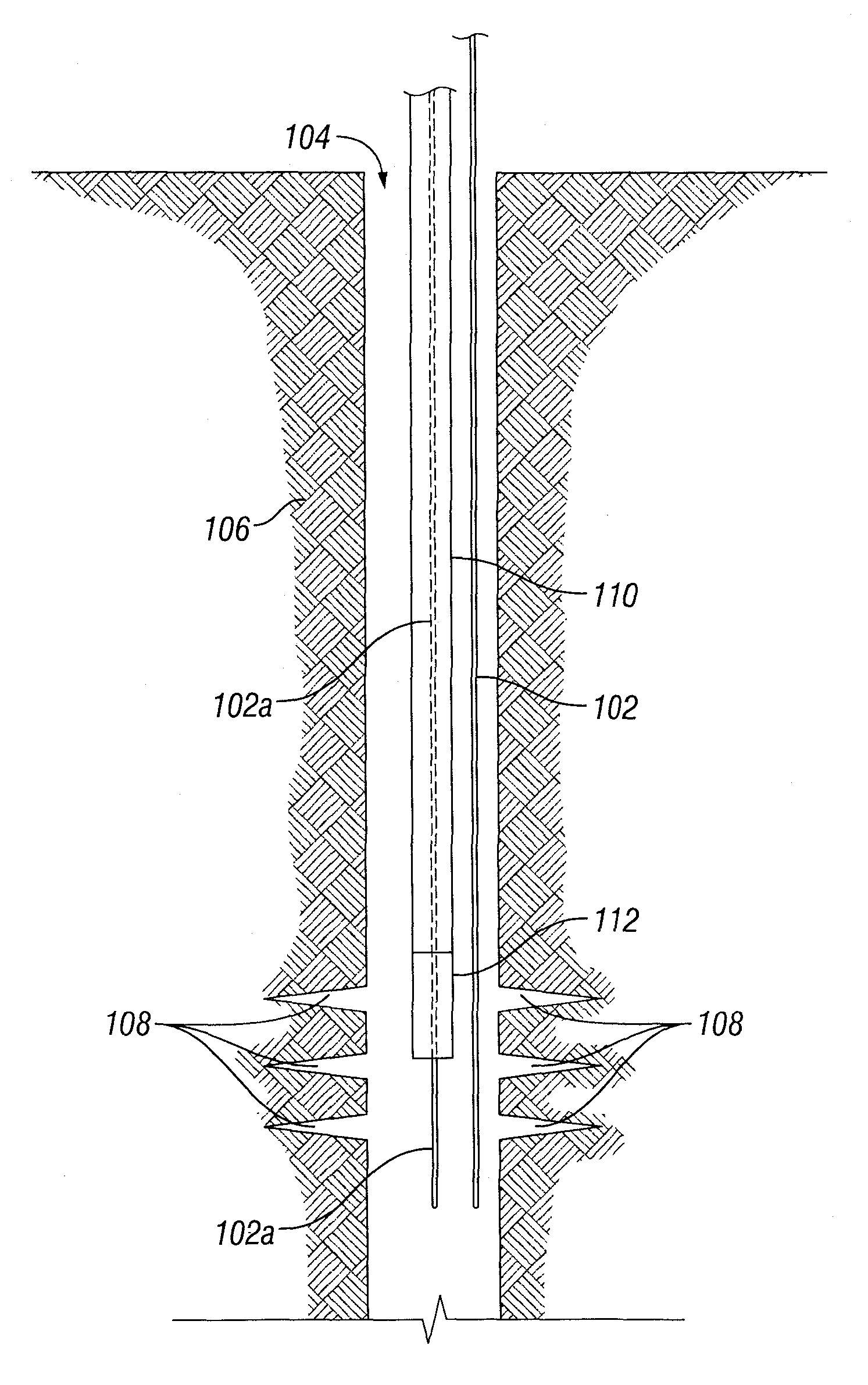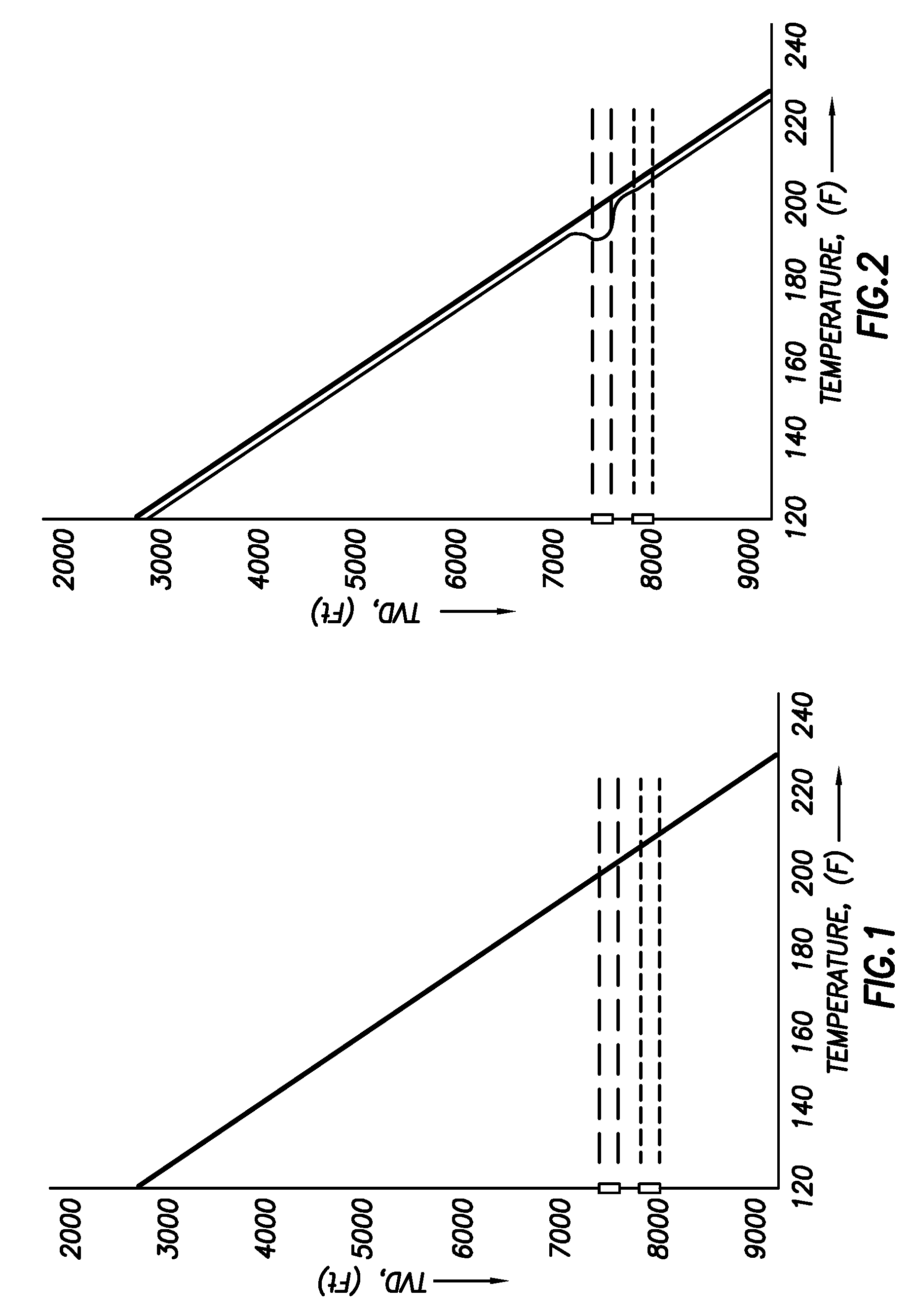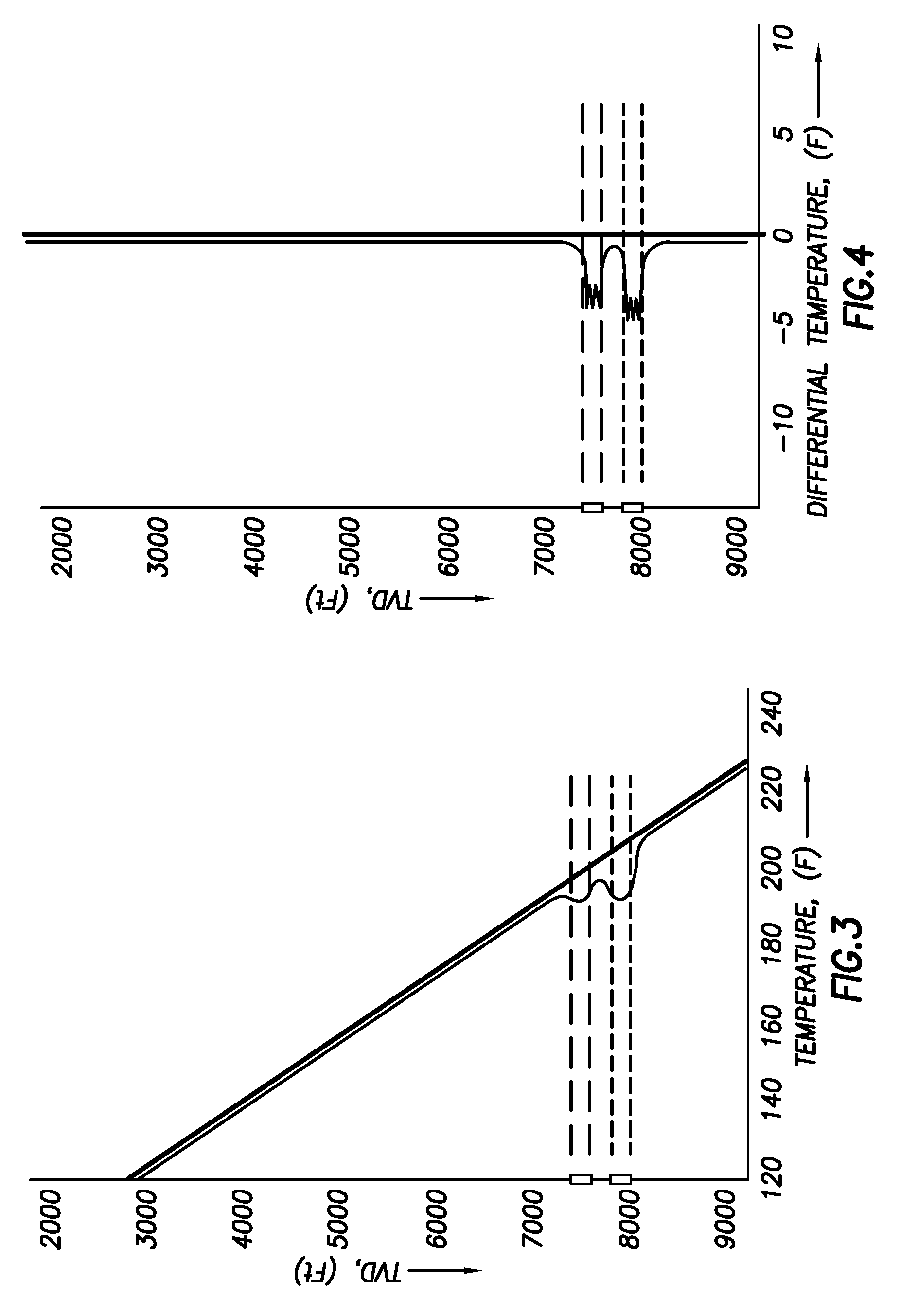Use of distributed temperature sensors during wellbore treatments
a temperature sensor and wellbore technology, applied in the field of hydrocarbonbearing formation treatment methods, can solve the problems of affecting the treatment effect of wellbore tubular components, affecting the treatment effect, and reacting too quickly
- Summary
- Abstract
- Description
- Claims
- Application Information
AI Technical Summary
Benefits of technology
Problems solved by technology
Method used
Image
Examples
Embodiment Construction
[0030]Analysis of differential temperature logs has been used in the oil and gas industry since the late 1960's as related in SPE 1750—Tracing Fluid Movements with a New Temperature Technique, E. Johns, 1967 and SPE 1977—Some Applications of Differential Temperature Logging, L. R. Jameson. However, this method is rarely used, possibly because it requires well logging both before and after the treatment. Today, a more typical method of determining fluid entry is the use of radioactive (RA) tracers.
[0031]The distributed temperature sensing (DTS) technology was pioneered in the early 1980's. It is based on optical time-domain reflectometry (OTDR), which is used extensively in telecommunications cable testing. Application in the oil and gas industry to date has been as permanent installations (see SPE 71676—The Use of Fiber-Optic Distributed Temperature Sensing and Remote Hydraulically Operated Interval Control Valves for the Management of Water Production in the Douglas Field, M. Tolan...
PUM
 Login to View More
Login to View More Abstract
Description
Claims
Application Information
 Login to View More
Login to View More - R&D
- Intellectual Property
- Life Sciences
- Materials
- Tech Scout
- Unparalleled Data Quality
- Higher Quality Content
- 60% Fewer Hallucinations
Browse by: Latest US Patents, China's latest patents, Technical Efficacy Thesaurus, Application Domain, Technology Topic, Popular Technical Reports.
© 2025 PatSnap. All rights reserved.Legal|Privacy policy|Modern Slavery Act Transparency Statement|Sitemap|About US| Contact US: help@patsnap.com



